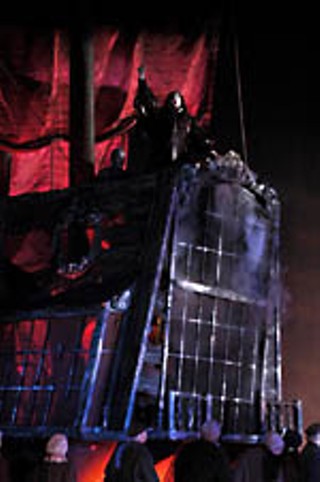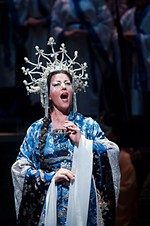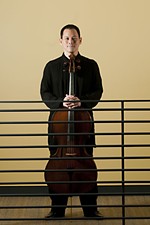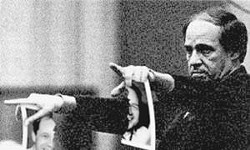The Flying Dutchman
Local Arts Reviews
Reviewed by Jerry Young, Fri., April 2, 2004

The Flying Dutchman
Bass Concert Hall, March 26
Austin Lyric Opera's first production of The Flying Dutchman was a solid and compelling staging of the opera that marked a turning point in Wagner's career and German opera.
There was not a weak point in the cast. As the Dutchman condemned to a restless immortality for rounding a forbidden cape and hoping to break the curse by finding true love in Senta, baritone Louis Otey brooded over the stage. Disturbingly youthful in his centuries-old clothes, Otey made the Dutchman at once powerful and world-weary, never losing vocally to Wagner's tempestuous orchestral undertow.
We never quite made sense of why the lovely young Senta was so driven to redeem the doomed captain, but in her obsessive intensity, Elizabeth Byrne left no doubt that she was, and in that she certainly held our attention.
We'd assume that a girl's father wouldn't encourage a cross-century romance, but for Senta's father, Daland, the answer lay in the captain's treasure. Daniel Sumegi managed to show Daland's enthusiasm for the promise of wealth without making us resent him.
Richard Brunner was endearing as the slightly thick Erik, Senta's jilted lover and the easiest character to relate to. Brunner made him the opera's only sympathetic figure, due in part to his consistently appealing vocal performance.
The demands of singing Wagner, maybe exacerbated by the pollen count, took its toll on the singers, with a few strangled tones and intonation problems fairly evenly distributed.
Constantinos Kritikos' stage design and Garnett Bruce's staging were straightforward and clearly drawn, so there was no trouble following Wagner's phantasmagorical yet simple story. Bruce kept things mostly uncluttered but in places was heavy-handed. With so much at stake, Senta and the Dutchman can't show the Rodolfo-and-Mimi sort of mutual attraction that exists on a human scale. They are driven by an über-love to which we groundlings can't relate. But instead of affection for one another, each seemed driven by what the other represented, so the second-act love duet became an eerie mating dance, with the two star-crossed lovers repeatedly orbiting each other to a near embrace but dramatically backing off each time just before they touched. The profound gag got stale fast.
Bruce was better at understatement, especially at the opening curtain, where he left us in the dark alone with Wagner's overture – not even a logo projected on the curtain. Often the overture is treated as the last chance to chat before intermission, but with no visual distraction, the music had the audience by its ears, primed for the story to follow.
Bruce forwent Wagner's ambitious stage direction of having the Dutchman's ship pulled down in a whirlpool as the couple ascends to heaven in an apotheosis of their love. Instead, as the ship cast off, Senta leapt off what we assumed to be a cliff, and we saw the lovers' silhouette projected in the sky. (Still, considering how little affection they showed each other in life, I wonder how they're getting along eternally bound to one another.)
As the spinning maidens and the crew of sailors, the ALO Chorus, abetted by the Texas State University Chorus, brought a full-bodied sound that at times was chilling.
The orchestra, led by Guido Ajmone-Marsan, was consistently clean and well synched and balanced with the singers. They caught fire often, but just as often the phrasing was perfunctory. The brass section did well bringing forth that field mark of Wagner's orchestration, but important string lines were often hard to pick out, even when you listened hard for them.
But the flaws balanced the pluses in this production. Maybe not a watermark for the ALO, but the composer and the audience were both well served.










